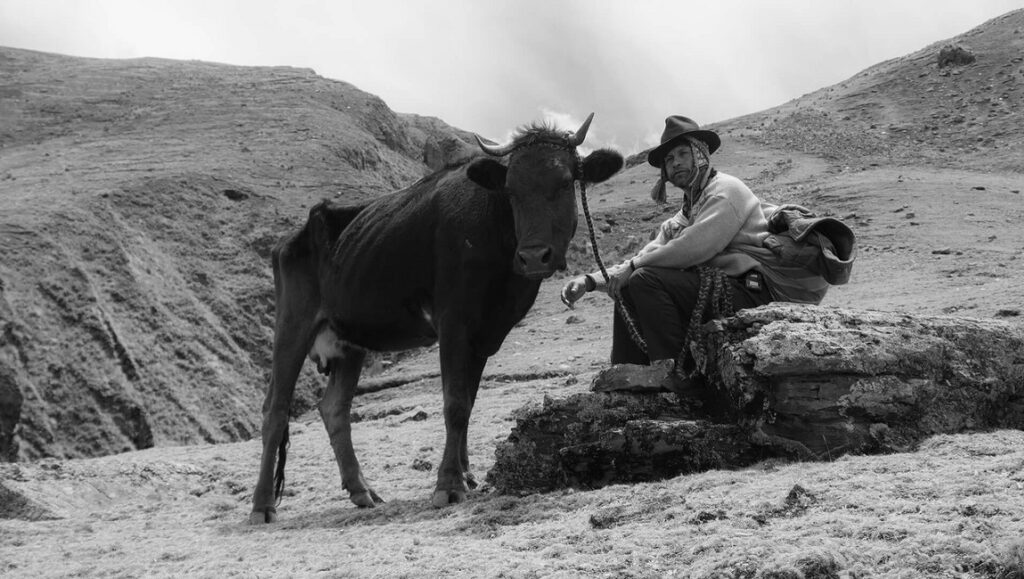Mauricio Franco Tosso’s Samichay, in Search of Happiness seeks to render the life of a peasant farmer on a grand, mythopoetic canvas, and it’s mostly successful, although its reach occasionally exceeds its grasp. Celestino (Amiel Cayo), a poor, indigenous Peruvian, lives in a small stone hovel high in the Andes Mountains, surrounded by rough, ragged terrain. Nothing grows here, the soil as inhospitable as the ominous peaks looming amongst the sky. A widower, Celestino has only his elderly mother-in-law, Augustina (Aurelia Puma de Ccallo), adult daughter, Yaquelin (Raquel Saihua Huainasi), and his cow, Samichay, as companions. Augustina chides him for his failures to provide food for them, while Yaquelin begs her father to let her move to the city, hoping to flee their empty, desolate life. Both women agree he should sell Samichay, who is as infertile as the land and cannot even provide milk for the family. Determined to prove his worth as a farmer, Celestino walks the land with Samichay in tow, convinced that the cow is good luck and that it’s only a matter of time before their fortunes turn. Tosso and cinematographer Hugo Carmona Chacon subsequently spend much of the film’s first half following Celestino at work, framing him against the vastness of the mountains as he works the Earth, tilling the soil and planting potatoes. It’s extremely slow-paced, but at its best, Tosso finds a soothing rhythm that suggests a trance-like sense of peace. This calm is interrupted when Yaquelin finally leaves home to live with an aunt in the city, and Augustina passes away in her sleep. Now totally alone except for Samichay, Celestino finally decides that he must sell the cow, setting off on a long journey by foot to find a buyer.
Shooting in widescreen, digital black-and-white, Samichay is not short on breathtaking imagery. Clouds gently roll off the mountain peaks, and long, winding roads are frequently covered in a hazy fog. Tosso tends to favor a specific camera movement, a slow pan to the left or right that sometimes even makes an entire 360° turn and takes in the full expansiveness of the landscape. It can be mesmerizing, but the shot’s frequency also produces a lulling effect. There are similarities here to Bela Tarr’s The Turin Horse, from the stylized cinematography and beast-of-burden iconography to an emphasis on the potato as signifier of impoverishment, but Tosso can’t match Tarr’s aggressive, impressively complicated mise-en-scène. Writer Gianna Giordani compares the film to the photographs of Martín Chambi, and suggests that Celestino’s journey is symbolic of the displacement of the Andean Indian population, a once large group of indigenous peoples that have assimilated or otherwise disappeared over the course of the 20th century. Whatever the case, the film builds to a shattering conclusion, and ultimately ends on an ambiguous note of uncertainty. Tosso has spent the better part of 90 minutes showing how difficult life can be in the unforgiving atmosphere of the Andes, but the drab, quotidian images of an anonymous city are no match for the grandeur of the mountains. They are always there, an implacable force, both majestic and harrowing.
Published as part of Neighboring Scenes 2021.


Comments are closed.